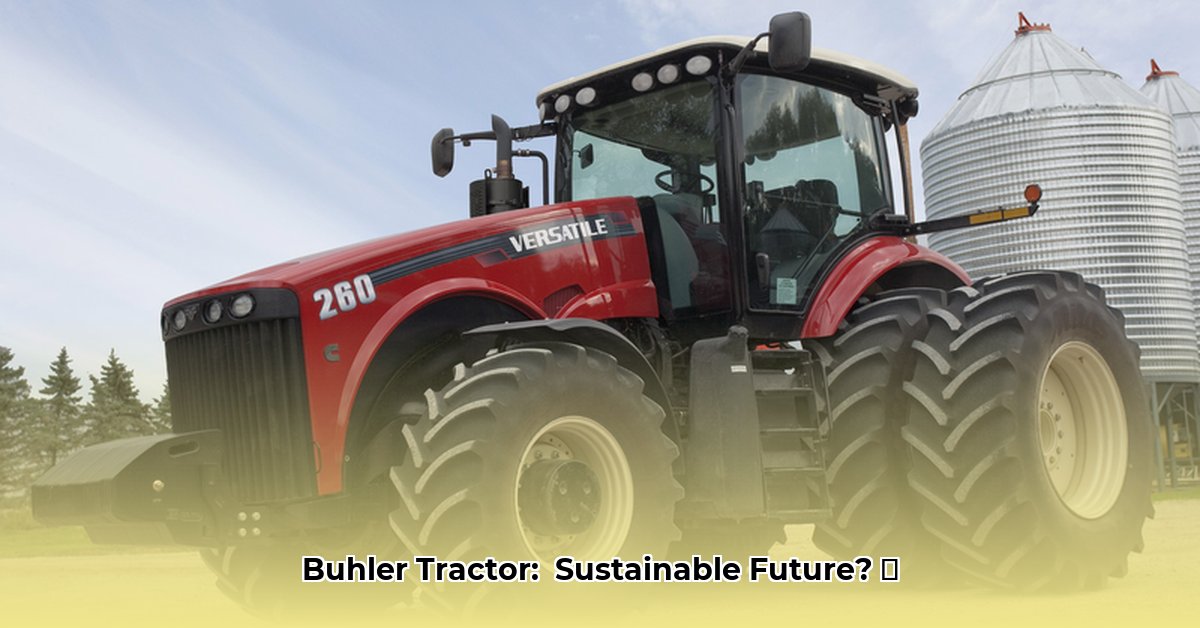
Buhler Industries: A Century of Farming Innovation
Buhler Industries, a Canadian agricultural equipment manufacturer established in 1932, boasts a diverse product portfolio ranging from tractors and tillage tools to sprayers and augers. Its long-standing success reflects adaptability to evolving farmer needs. However, a critical assessment of Buhler's commitment to environmental sustainability and socially responsible practices is needed. This case study examines Buhler's sustainability efforts, identifies knowledge gaps, and proposes actionable recommendations for stakeholders. The analysis focuses on the environmental impact of Buhler tractors, recognizing the wider implications of the company’s overall sustainability performance. For comparison, consider other brands like New Holland tractors.
Taking a Closer Look at Buhler's Sustainability Initiatives
While Buhler emphasizes research and development, concrete data on its sustainability performance remains limited. Detailed reports on its carbon footprint, water usage, waste management, and worker treatment are currently unavailable. This lack of transparency hinders a comprehensive evaluation of its environmental and social impact. How can investors accurately assess ESG (Environmental, Social, and Governance) risks without this critical information? This is a significant hurdle for both investors and customers seeking credible evidence of the company's commitment.
Buhler Tractors: Sustainability Under the Microscope
The core focus is on evaluating the sustainability of Buhler's tractors. While the company promotes innovation, the specifics regarding fuel efficiency, emission reduction technologies, and the use of sustainable materials in manufacturing remain largely undocumented. A comprehensive lifecycle assessment (LCA) (a method to evaluate environmental impacts across a product’s entire lifecycle) is crucial for a thorough understanding of the environmental burden associated with Buhler’s equipment. What quantifiable steps are being taken to reduce the overall environmental footprint of each tractor?
Analysis of Sustainability Performance and Risk Assessment
The absence of comprehensive LCA data prevents a definitive assessment of Buhler's environmental impact. However, based on available information, we can identify key areas of concern and potential risks. The following table provides a preliminary risk assessment matrix, though it is noted that many of these values are estimations given the existing data gaps:
| Risk Factor | Likelihood | Impact | Mitigation Strategies |
|---|---|---|---|
| Material Sourcing | Moderate | High | Partner with suppliers committed to sustainable sourcing; implement robust traceability systems; explore using recycled materials. |
| Manufacturing Processes | Low | Moderate | Improve energy efficiency; reduce waste; invest in cleaner production technologies. |
| Product Use | Moderate | Moderate | Design more durable and fuel-efficient tractors; facilitate repairability and recyclability. |
| Regulatory Compliance | Low | High | Proactively monitor and comply with evolving environmental regulations; pursue relevant certifications. |
Actionable Recommendations
To enhance its sustainability performance, Buhler needs a multi-pronged approach involving improved transparency and concrete actions. The following recommendations are provided for Buhler, investors, farmers, and regulators:
1. Buhler Industries: * Short-Term: Conduct comprehensive LCAs on key products and publicly release the data. * Long-Term: Report publicly using globally recognized standards (e.g., Global Reporting Initiative – GRI) and undergo independent verification.
2. Investors: * Short-Term: Demand greater transparency regarding Buhler's ESG performance. * Long-Term: Integrate sustainability metrics into investment decisions and actively advocate for improved sustainability reporting.
3. Farmers/Customers: * Short-Term: Prioritize tractors with better fuel efficiency and lower emissions. * Long-Term: Support companies with verifiable sustainability commitments and transparent practices.
4. Regulators/Governments: * Short-Term: Enforce existing environmental regulations and strengthen monitoring. * Long-Term: Mandate stricter sustainability reporting for agricultural equipment producers; incentivize sustainable manufacturing and design.
Conclusion: A Call for Transparency and Action
Buhler Industries, with its extensive history, holds a significant position in the agricultural sector. To secure its future and contribute to the sustainable growth of this critical industry, the company must prioritize transparency and commit to substantive sustainability improvements. The adoption of LCAs, enhancing supply chain sustainability, and open communication with stakeholders are crucial steps for improving its environmental and social performance. This will benefit not only Buhler but the entire agricultural ecosystem. Further research is urgently needed to address the data gaps currently hindering a comprehensive assessment of Buhler's true sustainability performance.